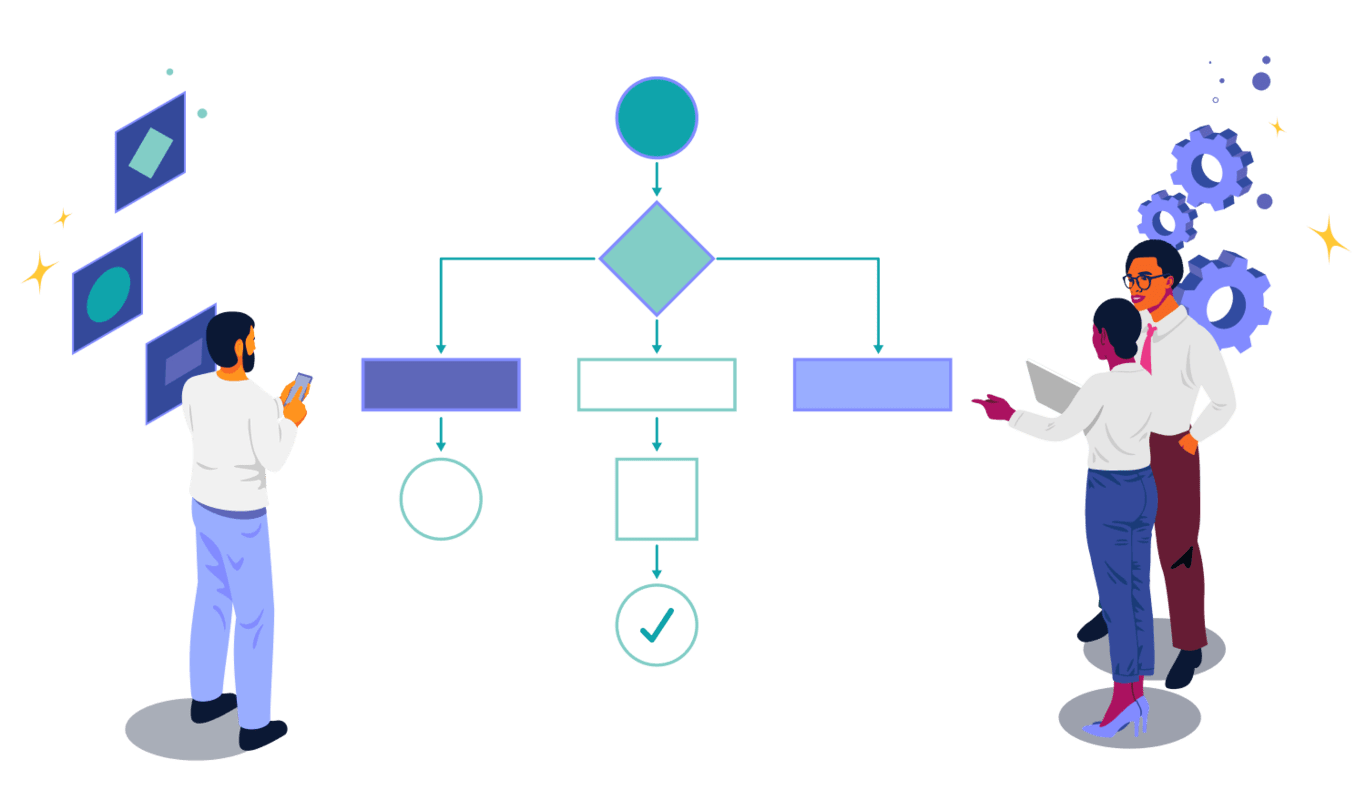Autonomous agents
Where intelligence meets independence

What is an autonomous agent?
An autonomous agent is software that can operate intelligently and independently to drive a piece of work to completion or where appropriate can dynamically engage a human employee to achieve the optimal outcome. While the term is often used interchangeably with AI agents, autonomous agents can make decisions independently and learn continuously, enabling them to improve outcomes and productivity over time with minimal human intervention.
Why are autonomous agents important?
Autonomous agents have the potential to transform business operations by dramatically increasing productivity and efficiency. They work seamlessly alongside employees, delivering superior personalized experiences while optimizing processes continuously. This enables organizations to scale operations and accelerate growth in ways previously thought impossible.
Benefits of autonomous agents
- End-to-end automation: Autonomous agents can independently handle complex tasks from start to finish, from analyzing requirements to executing solutions, reducing manual work while ensuring consistency and compliance across all operations.
- Enhanced decision-making: By combining AI analysis with trusted and proven workflows, autonomous agents can make informed decisions faster than humans, while maintaining governance and providing clear audit trails for all actions taken.
- Improved operational efficiency: Agents work 24/7, eliminate human error, reduce processing times, and scale quickly to meet demand, leading to significant cost savings and improved business outcomes.

How do autonomous agents work?
Autonomous agents operate by combining AI technologies to perceive their environment, make decisions, and take actions independently. They use large language models and advanced algorithms to process data, understand context, plan strategies, and execute tasks. When deployed in the context of a Center-out® business architecture, autonomous agents can operate within defined business rules, while continuously learning and adapting from their experiences.

Enter the age of the autonomous enterprise
What’s the difference between autonomous agents and AI agents?
Use cases for autonomous agents
Interaction summaries
In the contact center, an autonomous agent can summarize call center interactions, provide actionable next steps, and even carry out follow-ups on an employee’s behalf.
Incident investigations
In the back office, autonomous agents can carry out incident investigations, such as investigating a financial crime. An autonomous agent can analyze data from associated inputs, draft a report, and then even carry out the appropriate response with a human in the loop.
Legacy app modernization
Agents can analyze legacy application documentation, refine the steps necessary to build a new version of the app, and even implement code for new components with minimal human intervention.
Pega GenAI Blueprint™
Go from idea to app in a flash with the power of Pega GenAI™.
Key features of autonomous agents
Adaptive learning
Autonomous agents continuously learn from interactions and outcomes, evolving their knowledge and decision-making processes to improve performance over time while maintaining consistency in their foundational parameters.
Independent decision-making
Agents analyze situations, evaluate options, and make decisions without human intervention, using sophisticated algorithms and predefined rules to determine the best course of action.
Environmental awareness
Agents constantly monitor and interpret their operating environment, processing multiple data streams to maintain real-time awareness and respond to changes effectively.
Potential challenges with autonomous agents
Key challenges implementing AI agents in enterprise environments include ensuring reliable decision-making, maintaining transparency in AI processes, managing potential biases in learning algorithms, and establishing appropriate control mechanisms. Security concerns, ethical considerations, and the need for proper governance frameworks also pose significant challenges.
Solutions to autonomous agent challenges
To mitigate risk with any AI automation technology, organizations should ensure there is always a human in the loop to maintain proper governance and oversight. Teams should have a plan for responding to mistakes made by autonomous agents and should evaluate down the line risk. For example, if an autonomous agent makes a mistake, is it more consequential than if a human had made the same error?


The future of autonomous agents
Autonomous agents will become more sophisticated with advanced AI capabilities, enabling them to handle increasingly complex tasks across industries. Integration with business orchestration and automation technologies will enhance their ability to learn, collaborate, and make decisions, reducing reliance on legacy systems and leading to more efficient, intelligent, and autonomous organizations.
Frequently asked questions about autonomous agents
Ensuring responsible autonomous agent development involves several key practices:
- Implementing ethical design with transparency and accountability
- Adhering to legal standards
- Maintaining human oversight for critical decisions
- Continuously monitoring AI behavior
- Involving stakeholders in governance discussions
Autonomous agents make decisions independently by leveraging a combination of advanced algorithms, machine learning models, and data analysis. These agents are designed to process vast amounts of data from their environment, learn from patterns, and adapt their behavior to achieve specific goals. Machine learning models enable autonomous agents to build a repository of knowledge, which they use to predict outcomes and make informed decisions. Furthermore, they utilize reinforcement learning techniques to optimize their decision-making process, gaining rewards from beneficial actions while avoiding penalties associated with less effective strategies.
Autonomous agents can navigate unpredictable environments by employing sophisticated adaptive strategies that resemble human-like problem-solving. These agents utilize advanced machine learning models and deep neural networks to continuously analyze their surroundings and update their knowledge base accordingly.
Moreover, their ability to process vast quantities of data in near real time allows these agents to anticipate potential disruptions and proactively devise solutions. This level of adaptability is crucial, as it enables them to operate effectively even when environmental variables fluctuate unexpectedly.
